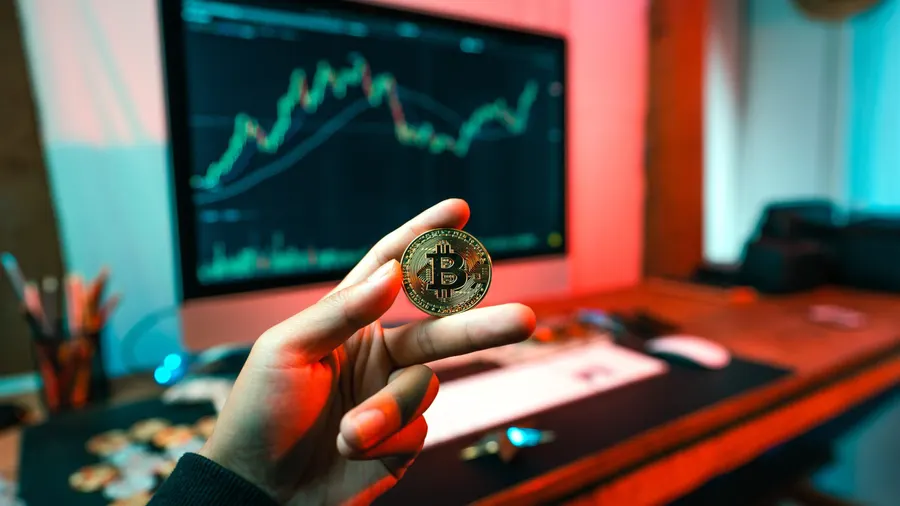Cryptocurrency Trading Using a CFD trading account to speculate on cryptocurrency price fluctuations or an exchange to buy and sell the underlying coins is known as cryptocurrency trading.
Table of Contents.
Cryptocurrency Trading
- What is cryptocurrency trading?
- Things to consider before you start
Conculation (Misspelling)
- Possible meaning based on misspelling
- What “conculation” isn’t
Conclusion Paragraph
- How to write a conclusion paragraph
- Example conclusion paragraph

CFD trading on cryptocurrencies
Trading CFDs allows you to speculate on changes in bitcoin prices without actually owning the underlying currencies. In the event that you believe the value of a cryptocurrency will increase, you can go long (or “buy”) or short (or “sell”).
Because both are leveraged instruments, you may have complete exposure to the underlying market with just a little initial investment, or “margin.” Leverage will increase both gains and losses,, as it still determines your profit or loss based on the entire size of your investment.
Buying and selling cryptocurrencies via an exchange
You acquire the coins themselves when you purchase cryptocurrencies through an exchange. To initiate a position, you must open an exchange account, deposit the whole asset value, and hold the cryptocurrency tokens in your wallet until you’re ready to sell.
Exchanges have a high learning curve of their own, as you have to understand the underlying technology and get an understanding of how to interpret the data. In addition, a lot of exchanges have deposit caps, and maintaining an account can be quite costly.
How do cryptocurrency markets work?
Since cryptocurrency markets are decentralized, no central authority, such as a government, issues or supports them. Rather, they traverse a computer network. Nevertheless, cryptocurrency may be kept in “wallets” and purchased and sold through exchanges.
Cryptocurrencies, in contrast to conventional money, are only a shared digital ownership record kept on a blockchain. Users transfer bitcoin units to another user’s digital wallet when they choose to do so. Until the transaction has been validated and added to the blockchain through a procedure known as mining, it is not regarded as final. Additionally, this is often how new tokens for cryptocurrencies are made.

What is blockchain?
A shared digital registry of recorded data is called a blockchain. This is the transaction history for each bitcoin unit, which illustrates how ownership has evolved over time.
Normal computer files lack some security protections that are exclusive to blockchain technology.
network agreement
A blockchain file is often viewable by all users on the network and is always kept on several computers connected to it, as opposed to in a single place. As a result, it is transparent and extremely hard to change, lacking any single point of vulnerability to hackers or mistakes made by users or software.
Encryption
Cryptography, a branch of advanced mathematics and computer science, connects blocks. Any effort to change data breaks the cryptographic connections between blocks, and computers inside the network can immediately detect fraudulent activity.
What is cryptocurrency mining?
The process of checking recent bitcoin transactions and adding new blocks to the blockchain is known as cryptocurrency mining.
Verifying the transactions
From a pool of pending transactions, mining computers choose transactions and verify that the sender has enough money to finish the transaction. This entails comparing the transactional information with the blockchain’s transaction history.
Making a fresh block
By solving a challenging algorithm, mining computers gather legitimate transactions into a new block and try to create a cryptographic connection to the previous block. Upon successfully creating the link, a computer updates its copy of the blockchain file with the new block and distributes it around the network.
What moves cryptocurrency markets?
Exchanges for cryptocurrencies respond to supply and demand. Nonetheless, because they are decentralised, they frequently escape the political and economic issues that plague traditional currencies. The following elements can significantly affect the price of cryptocurrencies, even if there is still a lot of ambiguity around them:
The total quantity of coins and the speed at which they are released, destroyed, or lost make up the supply.
Market capitalisation: the total value of all coins in circulation and the rate at which the public views this as evolving
Press: the amount of publicity and the way that cryptocurrencies are portrayed in the media
Integration: the degree to which a cryptocurrency may be seamlessly included into the current infrastructure, including online payment methods.
Cryptocurrencies are decentralized digital currencies.
They’re independent from banks or governments. All transactions are recorded in an open ledger called blockchain.
Trading takes place via exchanges.
These platforms enable users to buy and sell cryptocurrency with other traders, offering various strategies for trading: long-term purchasing, short-term price fluctuations, day trading, etc.
Prior to getting started: There are certain things you should keep in mind before getting underway:
Cryptocurrency markets can be extremely unpredictable:
Prices may fluctuate quickly,, and there’s always the risk of losing funds.
Regulation is in the midst of evolving:

Conculation.
I understand you’re looking for a conclusion paragraph, but the right word. A conclusion paragraph is the final paragraph in a piece of writing that wraps everything I understand you’re looking for a conclusion paragraph, but the right word. A conclusion paragraph is the final paragraph in a piece of writing that wraps everything up.
